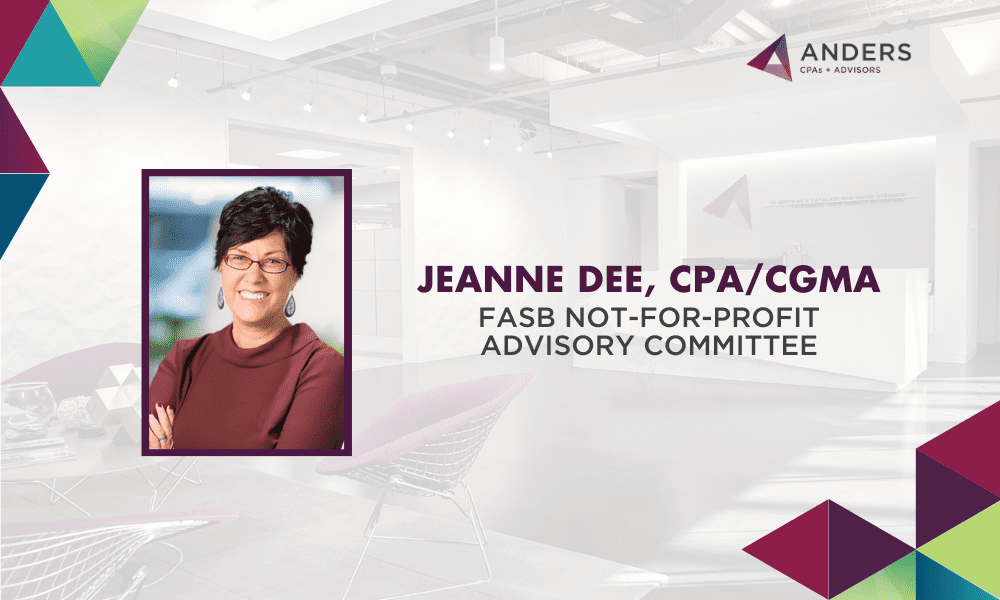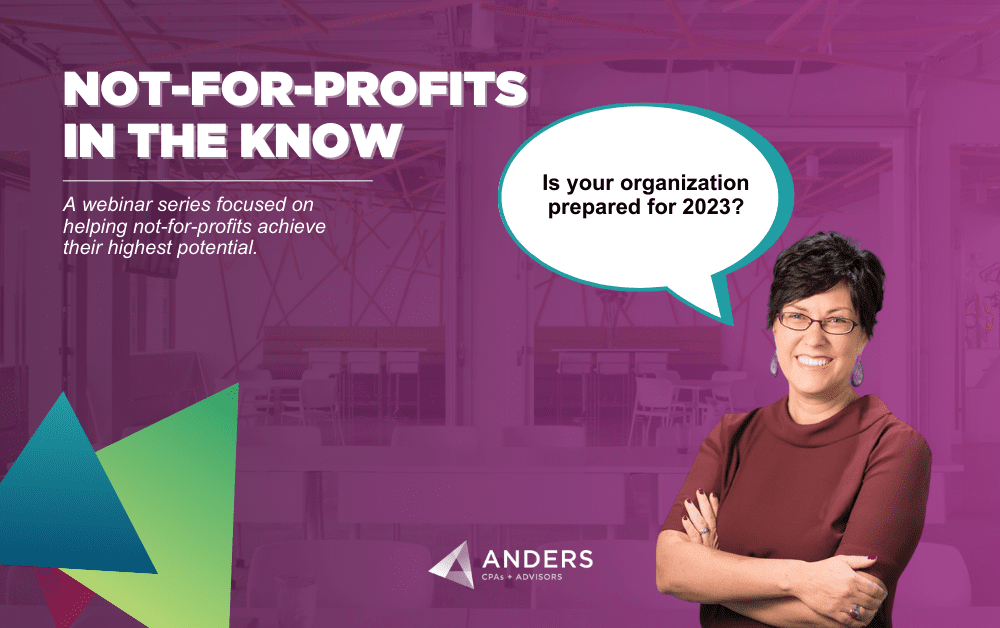Anders hosted a panel for the final installment of the Not-for-Profit in the Know webinar series of the year featuring discussions around the most pressing issues facing not-for-profits today. With a turbulent market making investments even more uncertain than before and a labor market that favors candidates over employers, there is a lot of uncertainty predicted to continue into 2023. View the full webinar recording or view the recap of the most pressing questions addressed below by Chris Schroeder, Jacques LeBeau and Jeanne Dee.
Should the market’s current status dictate how investment decisions are made?
As inflation remains steadily high, market volatility continues and global events continue to impact supply chains and drive prices up, do not panic and make impulsive moves contrary to serving in your organization’s best interest. Instead, follow Chris’ three R principles: Remain invested, Review investment allocation and Reallocate portfolio where necessary.
Should not-for-profits be concerned about the recent downturn in charitable giving in 2022?
While there are concerns among the not-for-profit industry that charitable giving may decrease, the industry also just experienced two years of record-breaking donations ($470 billion in 2020 and nearly $485 billion in 2021).
Where have we seen charitable giving increase?
Corporate giving has experienced an uptick, a trend that’s expected to continue into 2023 as job seekers are increasingly looking to join a workplace they feel makes a difference and an impact in their community.
What does the current labor market look like?
Unemployment remains low, leading to more open positions than there are potential workers, which has lent more power to job-seeking candidates, a huge difference from 2008 and 2009 where the opposite was true.
How are layoffs affecting the larger labor market?
Larger corporations have cut costs with layoffs, which has added more workers to the labor pool, though this may do little in the short term to address labor shortages. The pandemic has also continued to influence the labor market, with many job seekers shifting their priorities and seeking a more mission-focused role. While not-for-profits seem a likely landing spot for people like this, there’s fierce competition for each potential candidate. In order to stand out in from the pack, organizations may need to offer greater benefits in the short term to remain competitive.
How often should I perform a functional expense reporting review?
Due to the rapidly changing labor market, not-for-profits should review their functional expense reporting and allocations more frequently than ever before. For some not-for-profits, what used to be an annual review is now done at least quarterly or even monthly.
How concerned should my organization be about recession and inflation?
While concerns about recession and inflation aren’t overblown, the reality is that this is a part of the economic cycle and will subside over a period of time as they have in the past.
Will current levels of inflation affect investments?
Inflationary periods do not necessarily mean bad news for stocks; a look at stock performance over the last three decades does not show any reliable connection to higher or lower stock market returns and inflation.
How often should I review my organization’s Investment Policy Statement and how should I determine when it needs to be altered?
Review your organization’s Investment Policy Statement at least annually by examining your organization’s goals and objectives for the upcoming year: are they in alignment with one another? A standard review process is more reliable than making investment decisions based on current market conditions. Review your Investment Policy Statement regularly and review with a professional investment advisor or CPA.
How can I best take advantage of December giving season?
Donations are higher during this time, ask within your organization what else should be done with these donations to maximize their value.
How can I create stable income?
Create stable income through investing:
- Examine how your organization builds assets
- Discuss higher sweep rates with your bank
- Consider fixed income investments like treasuries and Certificates of Deposit’s for example.
What are some examples of other ways to increase revenue?
- Plan unique events that have the potential to be expanded in the future
- Come up with ways sell branded merchandise
- Find a corporate partner for co-sponsoring events
- Look into using unused office space as a resource to offset costs
- Run year-round fundraisers like Amazon Smile
- Board members often have unique skills, consider offering training sessions on topics of their expertise with donations as the cost of entry.
Should my organization be worried about unrelated business income tax (UBIT)?
Some income-generating activities may be deemed to be outside the scope and mission of the organization and may be subject to unrelated business income tax. Work with a financial advisor to understand this tax and the reporting requirements involved.
What effect has remote and hybrid work options had on the labor pool?
- Demand for in-office employment is rising but filling these positions can be difficult.
- Companies in the center of the company must now compete for labor with larger coastal cities who can offer higher salaries than local companies while still offering a lower salary than in their own communities.
- Hybrid or remote work is the new 401(k) match: potential employees are often looking for more flexibility which makes this benefit very appealing to them.
- Keep in mind that benefits offered to new hires may also be expected by your long-time or established employees.
Should I use different strategies to invest restricted or unrestricted funds?
- When considering restricted and unrestricted fund management, remember that the mission comes first.
- Respect donor expectations concerning restricted funds and examine what those restrictions are before moving forward with any investments.
- The law states that endowment funds bestow the donor with the ultimate power. Disregarding this concept can lead to a violation of the Uniform Prudent Management of Institutional Funds Act (UMIFA), which is inadvisable to say the least.
Anders Not-for-Profit Group is available to answer any further questions organizations may have about financial planning for 2023 and beyond. Contact an Anders advisor below to learn about strategies designed to help your organization thrive.
All Insights



